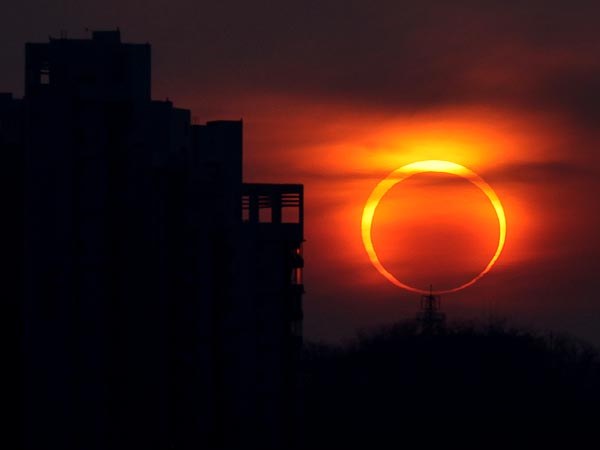Watch the 'Ring of Fire' solar eclipse live
Posted by: Jon on 05/09/2013 02:56 PM
[
 Comments
]
Comments
]
If you were unable to check out the last eclipse back in April, don't fear this one will prove to be much more dramatic. We will provide a live link from Space.com for those of us that are not able to see it with the naked eye, and that link will only be live during the event.
Free desktop streaming application by Ustream
This type of eclipse occurs when the Moon passes between Earth and the Sun, thereby totally or partially obscuring the image of the Sun for a viewer on Earth. An annular solar eclipse occurs when the Moon's apparent diameter is smaller than the Sun, causing the Sun to look like an annulus (ring), blocking most of the Sun's light. An annular eclipse appears as a partial eclipse over a region thousands of kilometers wide.

Picture source: National Geographic
"The precise line up, or syzygy, of the sun, moon and Earth have intrigued primitive cultures for millennia," Bob Berman, contributing editor and monthly columnist for Astronomy Magazine, said in a statement. "Here are the two most important and influential celestial bodies, so far as life on Earth is concerned, and on that day we can actually watch their clockwork motions. We observe firsthand as the Moon orbits around us at 2,250 miles per hour, showing off its speed as it centrally crosses the disk of the sun. It's pretty dramatic."
Free desktop streaming application by Ustream
This type of eclipse occurs when the Moon passes between Earth and the Sun, thereby totally or partially obscuring the image of the Sun for a viewer on Earth. An annular solar eclipse occurs when the Moon's apparent diameter is smaller than the Sun, causing the Sun to look like an annulus (ring), blocking most of the Sun's light. An annular eclipse appears as a partial eclipse over a region thousands of kilometers wide.

Picture source: National Geographic
"The precise line up, or syzygy, of the sun, moon and Earth have intrigued primitive cultures for millennia," Bob Berman, contributing editor and monthly columnist for Astronomy Magazine, said in a statement. "Here are the two most important and influential celestial bodies, so far as life on Earth is concerned, and on that day we can actually watch their clockwork motions. We observe firsthand as the Moon orbits around us at 2,250 miles per hour, showing off its speed as it centrally crosses the disk of the sun. It's pretty dramatic."
Comments






